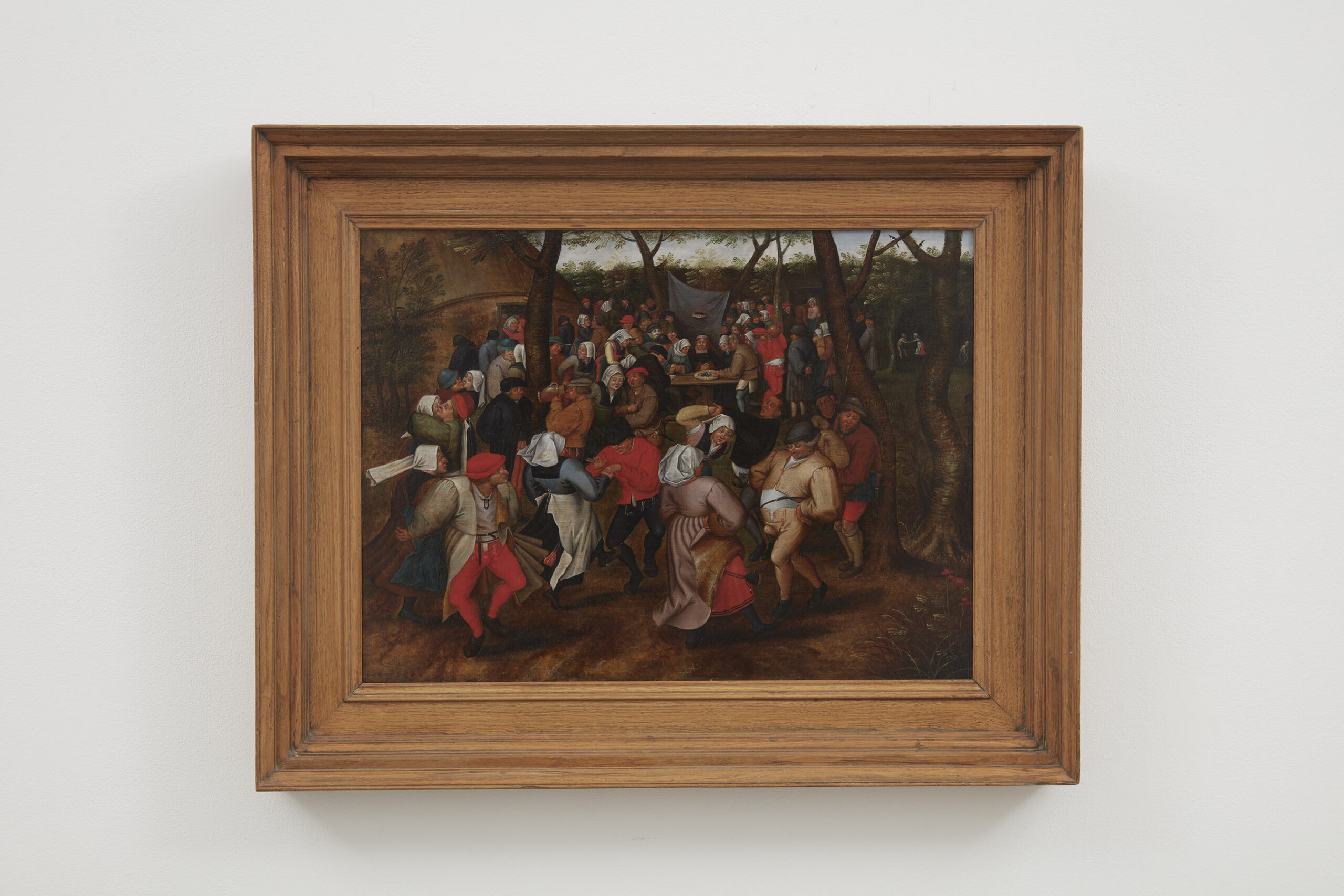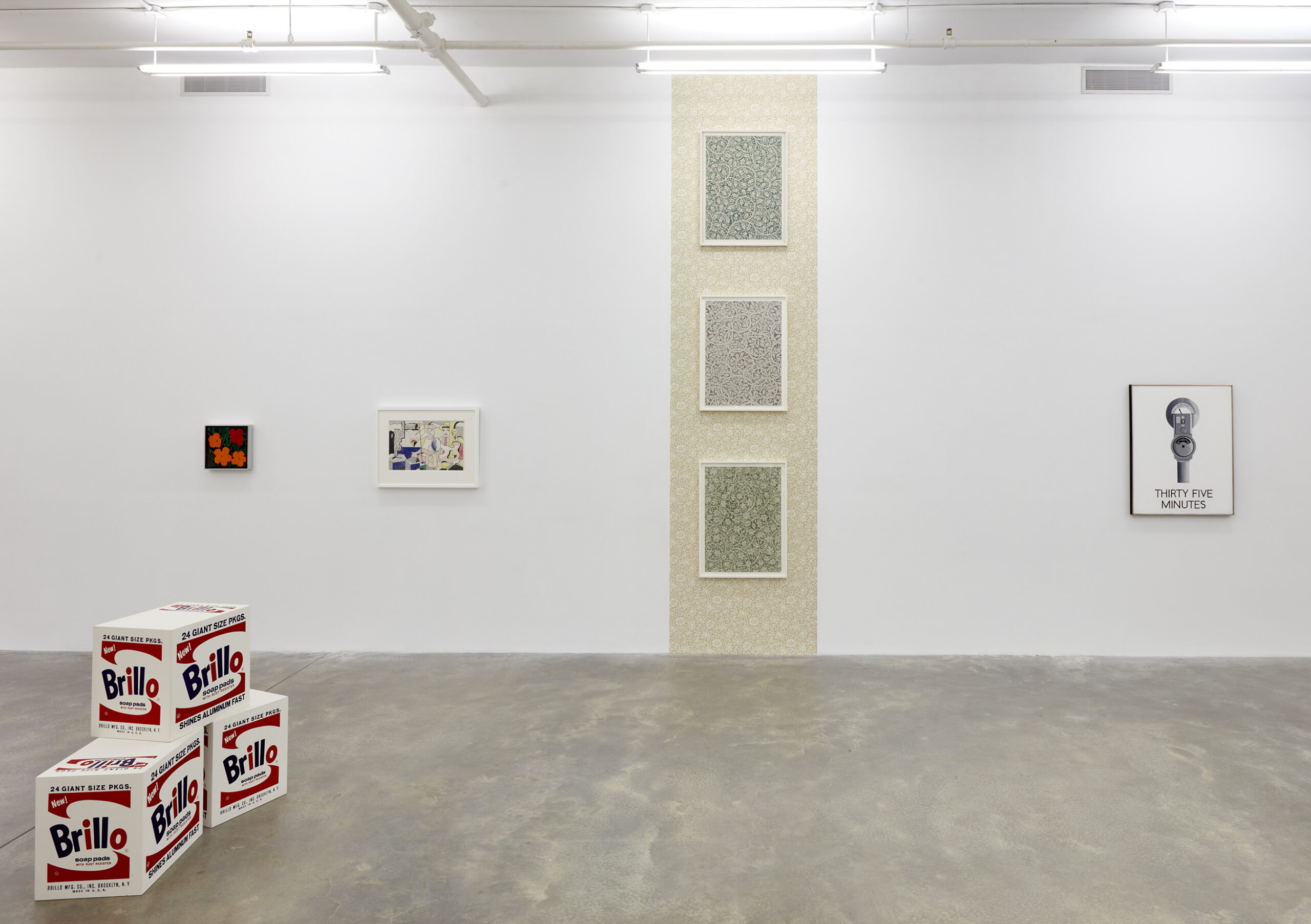Casey Kaplan is pleased to announce This Isn’t Who It Would Be, If It Wasn’t Who It Is (1), a group exhibition organized by Alex Glauber that spans nearly five hundred years and illustrates the breadth of inspiration, from misattribution to homage. For centuries, artists have explored implications of authorship, creative precedent, and tenuous attribution. Through pseudonym, quotation, collaboration, and conceptual obfuscation, artists embrace and anticipate nebulous interpretations. The artists included lay their influences bare or invite an epistemic “misreading” of their work, reminding us that art is rarely created in a vacuum and is instead both beholden to and framed by the past. The self-awareness of context is borne out in strategies that make conversations between influences central and complicate historiography for future audiences.
Following the premature death of Pieter Bruegel the Elder, his son, Pieter Brueghel the Younger, established an ambitious workshop committed to replicating his father’s most celebrated and sought- after images including The Outdoor Wedding Dance (c. 1615), a subject of great popularity throughout 17th century Flemish painting. To our knowledge, over one hundred versions of the scene were produced by the Younger’s workshop with only one-third being attributed to the master’s hand. Suspect ascription follows the bend of time and strikes at the porous foundation on which opinion finds its footing. An artwork can be set off on a journey, where it becomes untethered from the artist’s hand, drifting from their workshop and further still, to their circle.
Before Andy Warhol had his factory, artists like the Brueg(h)els and Lucas Cranach employed vast workshops to execute their most popular compositions to satisfy contemporary audiences. Later, with the advent of infrared analysis, modern-day scholars resolved outstanding questions of attribution and the division of labor between principal and workshop. Such is the case with The Judgment of Paris (c.1520), a popular subject in Lucas Cranach the Elder’s studio. Many of the strategies relating to compositional refinement, material preparation, and execution employed in workshops are attended to directly by Ella Walker. Fugue (2023) carries forth the visual language of the past by grafting contemporary references onto the architecture of old masters. It is through a commitment to the techniques and strategies of the past that Walker finds new territory.
This Isn’t Who It Would Be, If It Wasn’t Who It Is charts the myriad ways artists have deployed strategies that confuse taxonomy in the past century. Artists like Vern Blosum, Bruce Conner, and Michael (Corinne) West work under pseudonyms that complicate reception. Others embed collaborative concepts into the structure of their work as seen in the Surrealist drawing game “Cadavre Exquis” whereby artists compose a passage within a drawing or collage before folding it and passing it onto the next contributor. A similar logic unfolds across Sol LeWitt’s Wall Drawing #869, Copied Lines (1998) where, like a game of telephone, people participate in copying a single line across a wall to create a visual tautology. The use of instructions to obscure authorship and thwart attribution is equally foundational to Rudolf Stingel’s seminal 1989 work, Instructions, which illustrates the procedures associated with making his paintings.
In the words of Sherrie Levine, “I don’t think it’s useful to see culture as rigid and unchanging. I’d rather see it as having many voices, some conscious and some unconscious, which may be at odds with one another. If we are attentive to these voices, we can collaborate with them to create something almost new.” (2) It is this ethos that informs her series “After” (1981-), for which Levine photographed reproductions of Walker Evans’ portraits of depression-era sharecroppers. The conceptual thread extends to the practices of Sturtevant and Mike Bidlo whose repetitions mirror famous artists and peers. While Darren Bader reconstitutes the identity of extant works under his own name, Simon Starling recontextualizes old narratives through the framework of mid-century design. Homage factors centrally in Ull Hohn’s bucolic landscapes which follow the technical playbook of Bob Ross. More recently, David Thorpe’s watercolors take the Arts and Crafts Movement as their starting point, referencing the bookends and wallpapers of William Morris. Collectively, these artists embrace Levine’s awareness that the present is shaped by the past and untethered to the future.
1 (Anastasio/Marshall/Gordon/McConnell/Fishman) © Who Is She? Music, Inc. (BMI)
2 Sherrie Levine (1997) in Johanna Burton and Elisabeth Sussman, et. al. Sherrie Levine: Mayhem (New York: Whitney Museum of American Art, 2012) 3.
Anonymouse
Darren Bader
Mike Bidlo
Vern Blosum
Andre Breton, Jaqueline Lamba, Yves Tanguy
Pieter Brueghel the Younger
Claude Cahun
Bruce Conner
Lucas Cranach the Elder and Workshop
Cerith Wyn Evans
Walker Evans
Emily Feather
Ull Hohn
Sherrie Levine
Hannah Levy
Sol LeWitt
Mateo López
Jonathan Monk
William Morris
Richard Prince
Paul Sietsema
Simon Starling
Rudolf Stingel
Sturtevant
David Thorpe
Ella Walker
Andy Warhol
Michael (Corinne) West
Installation view: This Isn't Who It Would Be, If It Wasn't Who It Is, Casey Kaplan, New York, January 12 - February 17, 2024

Pieter Brueghel The Younger, The Outdoor Wedding Dance
c. 1615
Oil on panel
15.25 x 20.75” / 38.735 x 52.705 cm

Installation view: This Isn't Who It Would Be, If It Wasn't Who It Is, Casey Kaplan, New York, January 12 - February 17, 2024

Installation view: This Isn't Who It Would Be, If It Wasn't Who It Is, Casey Kaplan, New York, January 12 - February 17, 2024

David Thorpe, Quiet Now, Hush...pensive, watching
2022
Watercolor on paper
29.1 x 21.2” / 74 x 54cm, Framed: 32.2 x 24.3” / 81.76 x 61.8cm

Installation view: This Isn't Who It Would Be, If It Wasn't Who It Is, Casey Kaplan, New York, January 12 - February 17, 2024

Installation view: This Isn't Who It Would Be, If It Wasn't Who It Is, Casey Kaplan, New York, January 12 - February 17, 2024

Walker Evans, Allie Mae Burroughs, Wife of Cotton Sharecropper, Hale County, Alabama
1936
Gelatin silver print
9.5 x 7.5”/ 24.13 x 19.05cm Framed: 22.5 x 18” / 57.15 x 45.72cm

Sherrie Levine, After Walker Evans: 3
1981
Gelatin silver print
Print: 8 x 10” / 20.3 x 25.4cm
Framed: 21.25 x 17.25 x 1.12” / 54 x 43.8 x 2.9cm

Cerith Wyn Evans, Untitled (Perfect Lovers)
2008
Wall clocks
Each: 10.75 x 10.75 x 1.68” / 26.1 x 26.1 x 4.3cm Overall: 10.75 x 32.68 x 1.68” / 261. x 83.3 x 4.3cm

Installation view: This Isn't Who It Would Be, If It Wasn't Who It Is, Casey Kaplan, New York, January 12 - February 17, 2024. Installation of Sol LeWitt's Wall Drawing #869, Copied Lines. (1998) will be completed January 12, 2024.

Sol LeWitt, Wall Drawing #869, Copied Lines.
1998
Marker
First drawn by Jeffrey Issac and others, Villa Vilcampana, Treia Italy, July 1998 Dimensions variable, 81 x 211” / 205.74 x 535.94
Installation will be complete January 12, 2024

Installation view: This Isn't Who It Would Be, If It Wasn't Who It Is, Casey Kaplan, New York, January 12 - February 17, 2024

Rudolf Stingel, Instructions
1989
Silkscreen on paper, in four parts
Each: 42 x 30.5” / 106.7 x 77.5cm Overall: 84 x 61” / 213.4 x 154.9cm

Installation view: This Isn't Who It Would Be, If It Wasn't Who It Is, Casey Kaplan, New York, January 12 - February 17, 2024

Installation view: This Isn't Who It Would Be, If It Wasn't Who It Is, Casey Kaplan, New York, January 12 - February 17, 2024

Simon Starling, A Zig-Zag Chair designed by Gerrit Rietveld in 1934 and reproduced using 45,910 year-old swamp kauri wood in 2015
2015
Swamp kauri wood
29.3 x 16.9 x 13” / 74.5 x 43 x 33cm

Installation view: This Isn't Who It Would Be, If It Wasn't Who It Is, Casey Kaplan, New York, January 12 - February 17, 2024

Installation view: This Isn't Who It Would Be, If It Wasn't Who It Is, Casey Kaplan, New York, January 12 - February 17, 2024

Lucas Cranach the Elder and Workshop, The Judgement of Paris
1520
Oil on panel
24.125 x 15.625” / 61.1 x 38.8cm

Installation view: This Isn't Who It Would Be, If It Wasn't Who It Is, Casey Kaplan, New York, January 12 - February 17, 2024

Michael (Corinne) West, Red Still Life
1959
Oil on canvas
37 x 30” / 93.98 x 76.2cm

Installation view: This Isn't Who It Would Be, If It Wasn't Who It Is, Casey Kaplan, New York, January 12 - February 17, 2024

Mike Bidlo, THIS IS A PORTRAIT OF MARCEL DUCHAMP AND/OR RROSE SÉLAVY IF I SAY SO
2019
Telegram
11 x 8.5” / 27.94 x 21.59c

Installation view: This Isn't Who It Would Be, If It Wasn't Who It Is, Casey Kaplan, New York, January 12 - February 17, 2024

This Isn’t Who It Would Be, If It Wasn’t Who It Is
Top
























